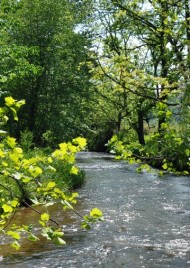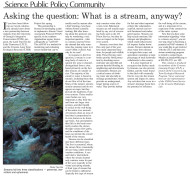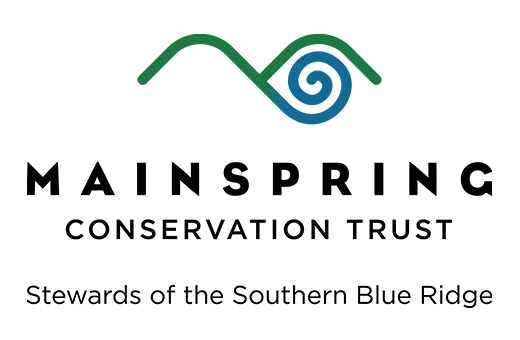From The Franklin Press, March 28, 2014
 If you have been following our recent columns, you already know about a new partnership between students from the University of Georgia’s Integrative Conservation (ICON) program, the Land Trust for the Little Tennessee (LTLT), and the Coweeta Long Term Ecological Research (LTER) Project this spring.
If you have been following our recent columns, you already know about a new partnership between students from the University of Georgia’s Integrative Conservation (ICON) program, the Land Trust for the Little Tennessee (LTLT), and the Coweeta Long Term Ecological Research (LTER) Project this spring.
This partnership is focused on developing a plan to implement a Stream Visual Assessment Protocol (SVAP) specific to the southern Appalachian region, known colloquially as “saSVAP.” The saSVAP is a method for monitoring and evaluating stream health that can be readily used by anyone after a brief training, even those without formal scientific training. But after learning about this protocol, you may be wondering a very important question – what is a stream, anyway? Does the channel that only sometimes has running water in it count? (Hint: it does!) And why do we care?
In response to the first question, a stream is a runningbody of water in a
natural low area or channel, distinguished from a river based primarily on the fact that streams are smaller in size. The majority of the country’s water is found in streams, including those that do not flow all of the time. Many of the nation’s streams remain unnamed and do not appear on maps, but they provide the backbone of our river systems. These smaller water bodies are very important as they feed into and form our larger river systems, and their health is critical to the well-being of the entire river network. All streams drain an area of land that is proportional to its size, known as its drainage basin. Any precipitation that falls in the basin eventually reaches the stream through various flow paths, and the conditions of the basin can dictate the overall health of the stream.
Streams can be classified into three different types. The first is perennial, where the stream flows consistently all year long, under normal weather conditions. A second kind is intermittent, where the stream channel only contains water for part of the year, typically in the winter and spring months. A final type of stream that can be found is ephemeral. Typically this type of stream only contains water after a rain event. Ephemeral streams are not usually regulated by any sort of overseeing body such as the US Forest Service, but they do have an impact on the larger river system.
Streams, even those that flow only part of the year, have many important functions, for people and wildlife alike. These flowing water bodies provide flood protection by absorbing excess rainwater and snowfall and prevent harmful flooding in neighboring and downstream communities. Streams are a critical source of drinking water and also help to recharge groundwater, which provides an underground, longer lasting source of water. They provide habitat for fish and other important critters like salamanders, crayfish, mussels and several threatened and endangered species. Streams can help recycle nutrients, like nitrogen and phosphorus, which could reduce harmful impacts further downstream. Farmers depend on clean water from streams to irrigate their crops, and agriculture constitutes a large percentage of total freshwater withdrawals in the country.
It is also important to recognize that ditches made by humans can also provide habitat, and the water found in the ditch will eventually find its way into the stream system and impact its status. Any activities that occur in a stream’s drainage basin have the potential to influence the well-being of the stream, and it is important to be cognizant of the connectivity of the entire system.
Now that you have some information regarding “what is a stream, anyway”, you are one step closer to becoming a potential saSVAP volunteer. If you would like to get involved with the LTLT and their new stream monitoring program is invited to contact Jason Meador at [email protected] or at 828-524-2711 ext. 309.
This column is produced by members of the Coweeta Listening Project (CLP), a branch of the Coweeta Long Term Ecological Research Program. Views expressed here are not representative of the USDA Forest Service or the Coweeta Hydrologic Lab.


